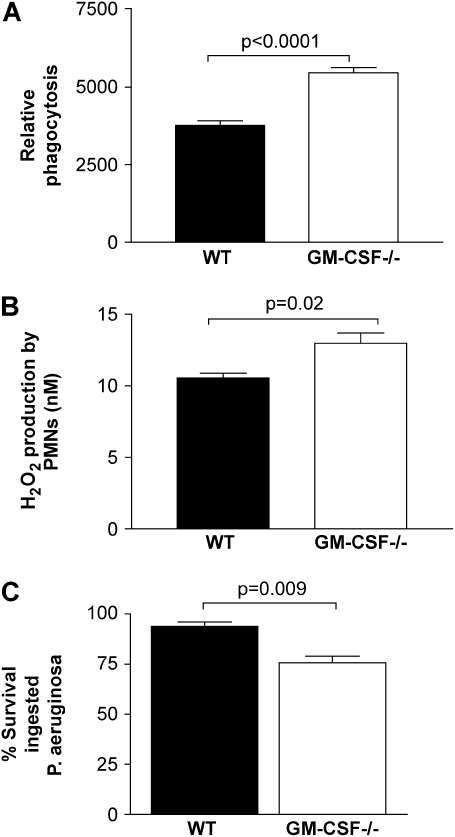Figure 7.
PMN host defense functions are enhanced in GM-CSF−/− compared with WT mice. (A) PMNs elicited to the peritoneal cavity 5 h after glycogen elicitation from GM-CSF−/− mice (open bars) show a significant increase (P < 0.001, n = 6) in the ability to phagocytose Gram-negative bacteria in vitro compared with PMNs from WT mice (closed bars). (B) Similarly, H2O2 production by peritoneal PMNs was greater in GM-CSF−/− mice than in WT mice (P = 0.02, n = 5). Data are representative of two experiments. (C) PMNs were collected by lavage from lungs of WT (closed bars) or GM-CSF−/− mice (open bars) 24 h after intratracheal instillation of P. aeruginosa–derived LPS. PMNs were adhered for 30 min in SFM before being analyzed for the ability to kill ingested P. aeruginosa using the tetrazolium dye reduction assay. PMNs isolated from the lungs of GM-CSF−/− mice were significantly better at limiting intracellular bacterial growth compared with PMNs from the lungs of WT mice (P = 0.009, n = 6).

